Lesson Note and Plan on Mathematics
Fractions
Subject: Mathematics
Theme: Number & Numeration
Topic: Fractions
Date: dd/mm/yyyy
Class: Basic 1
Duration: 35 Minutes
No of Learners: 30
Learning Objectives:
By the end of the lesson learners should be able to:1) identify one-half ½ of a whole using concrete objects
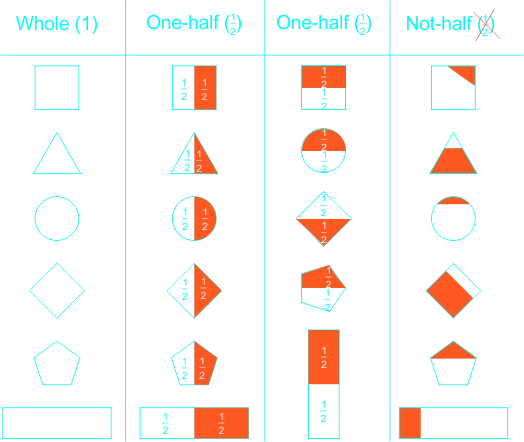
2) identify one-quarter ¼ of a whole using concrete objects

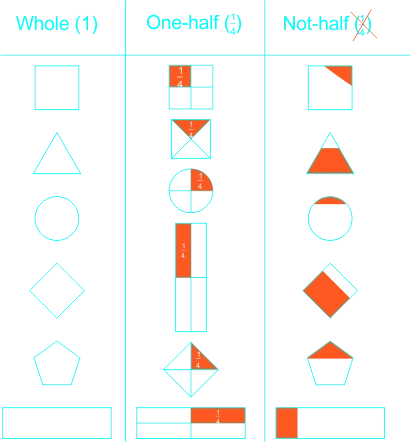
3) identify the relationship between one-quarter ¼ and one-half ½
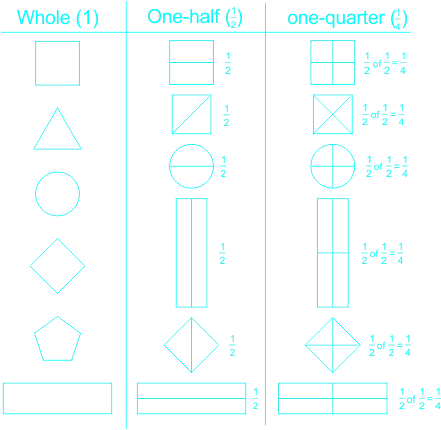
Rationale:
Fractions are everywhere, from the gas station to recipes in a cookbook. Fractions are one of the most fundamental concepts in mathematics, and their importance to future math success cannot be understated. Understanding fractions is essential for algebra and other more advanced topics in mathematics.Prerequisite/Previous knowledge:
Learners can count 1-99.Learning Materials:
1. flash cards2. Oranges, apples, paper cuttings of shapes: Squares, rectangles, circle. Coloured pencils and; pair of scissors, etc.
Reference Materials:
1) New Method Mathematics for Primary Schools 1. C. F. Oredugba, R. Ohuche, G. Salahu et al2) Understanding Maths Book 1 African First Pub. Ltd. Marian N. Daud-Osuaght
3) New Approach to Quantitative Reasoning Bk. 1 Rasmed T.A.O. Olayiwola.
Lesson Development:
| STAGE | TEACHER'S ACTIVITY | LEARNER'S ACTIVITY | LEARNING POINTS |
|---|---|---|---|
| INTRODUCTION full class session (3 mins) |
The teacher asks learners to count 1-99 in the air and sand. | The learners count 1-99 in the air and sand | Warming up and revising previous lesson on whole number 1-99 |
| The teacher begins the day's lesson by checking learners' textbook/notebook, thereafter displayed objects "Oranges, apples, paper cuttings of shapes: Squares, rectangles, circle" for the learners to identify. | Learners identify objects as Oranges, apples, paper
cuttings of shapes: Squares, rectangles, circle.. |
Developing the idea of the concept Whole (1). | |
| DEVELOPMENT Step 1. Group Work (5 mins) |
The teacher guides the learners to form four groups and asks them to choose their leaders and secretaries. | Learners choose their group leaders and secretaries. | Inculcating leadership skills, competitive spirit, cooperation, teamwork and a sense of responsibility among learners. |
| The teacher introduces the topic using concrete objects "a pair of trousers, a pair of scissors, Oranges, Apples, Paper cuttings of shapes: Squares, Rectangles,
Circle, and told the learners that each of these objects is a whole (1), and told the learners that if the each objects is shared equally between two persons, each person will get one-half (½). |
Learners study these objects/shapes that show one-half (½) and the objects/shapes that are not-half.
|
Through practical demonstrations using concrete objects and shapes, guide the pupils to discover the concept of one-half. | |
| ACTIVITY 1 STEP 2 3 mins. |
The teacher guides the pupils in a practical activity to work with a partner. | Learners work with a partner to do the following: a) Show one half of your table. b) Show one half of the board. c) Show one half of your ruler. d) Show one half of your pencil. e) Fill a jar to half full with water or sand. f) Draw a line on the floor. Walk down one half of the line. g) relate your results to the figure below 
|
Being able to discover the concept of one-half. |
| ACTIVITY 2 STEP 3 5 mins. |
The teacher guides the pupils in a practical activity to work on there own. | Learners do the following on there own: a) Draw each shape given below in your exercise book twice. circle rectangle square triangle b) Label the first shape as one whole. c) Divide the second shape into two halves using your ruler. d) For each shape, colour half. Remember to use a different colour for each shape. Colour nicely within the border. e) relate your results to the figure below 
|
Being able to discover the concept of one-half. |
| ACTIVITY 3 STEP 4 3 mins. |
The teacher guides learners to perform the following activity. | Learners do as teacher says to fold the papers correctly. 1. Get a round top like that of a cup or bottle. 2. Draw round the edge on a piece of paper. (Draw three circles.) 3. Cut out the circles. (Note, each circle is one whole.) 4. Write one whole on the first circle and stick it to the page of your exercise book towards the top. 5. Take the second circle. Fold it into two equal parts. Colour one-half of the circle. Write one-half on each part. Stick onto the same page below the second circle. 6. Next, fold the third circle into four equal parts. Name each part one- quarter. Colour the one-quarter. Stick the circle below the second circle. 
|
Relationship between one-half (½) and one-quarter (¼) |
| STEP 5 5 mins. |
The teacher provides the learners hints from the activity 3, and ask the learners questions: 1) 2 halves = ________ 2) 2 quarters = _______ 3) one-half of half = _______ |
Learners expected respond 1) 2 halves = 1 i.e. (½) and (½) = 1 2) 2 quarters = (½) i.e. (¼) and (¼) = (½) 3) one-half of half = one-quarter i.e. (½) of (½) = (¼) |
Relationship between one-half (½) and one-quarter (¼) |
| Evaluation Full class session (5 mins) |
Ask the following questions to evaluate the achievement of the set objectives. What fractions of the objects drawn below are shaded? 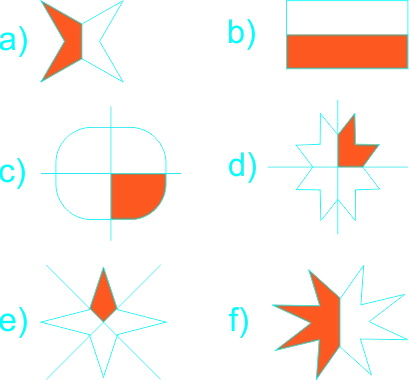
|
Learners expected response: a) Half (½) b) Half(½) c) One-quarter (¼) d) One-quarter (¼) e) One-quarter (¼) f) Half (½) |
Confirming the achievement of the set objectives. |
|
|
|||
| Conclusion, full class session (3 mins) | The teacher asks learners: 1. When a whole is divided into two equal parts, one part of a whole is known as _______ 2. When a group of objects is shared into two equal parts, one part of the objects equals _______ 3. When a whole is divided into four equal parts, one part out of four parts is known as _________ |
Learners expected answers: 1. When a whole is divided into two equal parts, one part of a whole is known as one-half. It is written as (½) 2. When a group of objects is shared into two equal parts, one part of the objects equals one-half of the whole group. 3. When a whole is divided into four equal parts, one part out of four parts is known as one-quarter. It is written as (¼) |
Communication: This is developed through answering questions verbally and interpreting the silent signs of teammates during the activities. |
| ASSIGNMENT | The teacher gives learners a take home on the board and from textbooks. 1) Copy and show by drawing a dotted line (one-half) (½) of the objects below. 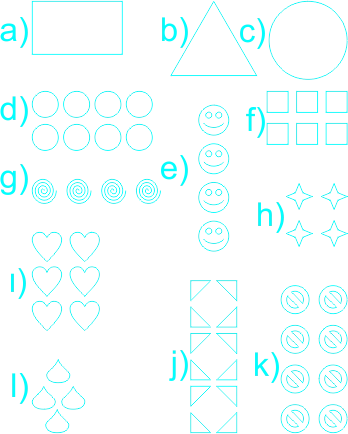
2) Copy and show by drawing a dotted line (one-quater) (¼) of the objects below. 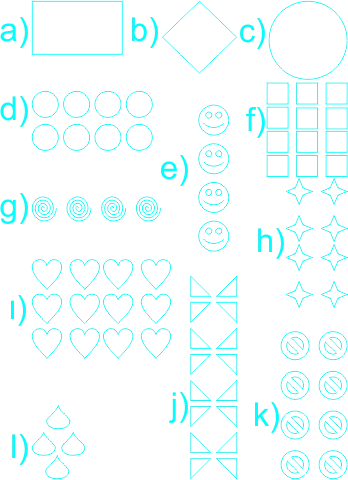
|
Learners answer other questions. | Improving their level of understanding on fractions. |